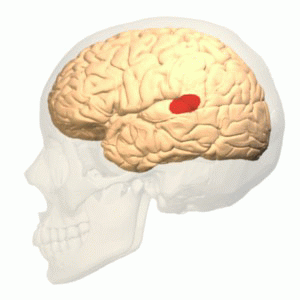The myth-busting article claims that teaching strategies tailored to student learning styles do not improve learning, and implies that learning styles are thus useless. Perhaps I'm overstating that implication, but considering that readers are enticed with this headline 10 Lies About the Brain, on the magazine cover, I don't think so.
 |
| Many A&P study activities are fun for visual and kinesthetic learners. |
Another issue to consider is how experimental results apply to individuals—rather than giving us a group's average measure of performance impacts of teaching to specific learning styles. Have we sufficiently eliminated the possibility that some students are more style-dependent than others?
Questions that occur to me include how and when "learning" is measured for such experiments. Could learning be quicker when targeting teaching to learning styles? Could some kinds of learning benefit from a learning-style approach to teaching, but not other kinds of learning?
Regardless of the potential pitfalls of research that has failed to prove that teaching strategies keyed to specific learning strategies improves learning, there are some additional aspects to consider. One is that learning-style targeted teaching has not proven to do any harm. Perhaps there are other benefits to providing multiple types of learning experiences to our students besides the "ability to learn" the concepts. Do students enjoy learning more when it better fits their personal style?
Another issue not addressed by the recent article, nor any of the similar articles that I've seen, is that it doesn't seem to consider that most of us teachers don't much rely on style-specific teaching strategies, anyway.
What we most often do is suggest that students make their own choices about study strategies based on their learning style preferences. We do that because we know that each student has their own way of thinking and learning. Why not help them do a bit of metacognition and analyze which study strategies work best for them? Or at least help them figure out which strategies are more comfortable—or less painful?
 |
| A&P students can tailor personal study to their learning styles |
Likewise, I could learn all the features of the human skull by reading a narrative description—but it's a heck of a lot more fun to instead learn them by exploring an actual human skull held in my hands. Perhaps that's because I'm a kinesthetic learner and my comfort and joy of learning blossoms when I can play with specimens.
Doesn't comfort and joy of learning—perhaps enhanced by making personalized choices in study strategies—have some value alongside the value of learning outcomes measured on an exam?
Perhaps it's not very useful to have a black-and-white approach to learning research that implies that because we have not proven a link between learning-style teaching strategies and learning outcomes, such strategies are therefore useless. Let's consider a more shades-of-gray approach that allows the possibility that suggesting learning-style-specific study strategies to our students may make learning more enjoyable for them—and possibly more efficient.
What can we use from this in teaching undergraduate A&P?
- Learning research has not confirmed a significant impact on learning when we provide learning activities matched to the learning styles of our students, so perhaps we should avoid focusing too much on trying to do that.
- Consider the value of metacognition—thinking about how we think and learn—for our students when they are planning their own study strategies. Perhaps suggesting to them a personalized approach based on individual learning styles can be helpful.
- Learning styles should not be seen as hard barriers to learning, but instead seen as areas where the process of learning can be adjusted for ease and comfort of learning.
- When students insist that you must deliver content to match their learning styles, or "I can't learn," suggest to them the more reasonable assertion that they can still learn effectively no matter the style of presentation. Then consider helping them tailor their own study strategies to their preferred learning style.
- Although a learning-style approach should never limit the strategies we can use in learning, adapting personal study strategies to learning-style preferences may enhance the experience of learning.
Want to know more?
- M. Scudellari. Popular Science. November 2015. p.49-53.
- One of many articles that in recent years claiming to debunk the entire concept of learning styles by refuting their value in designing lesson plans.
- my-ap.us/1QJBDPU
VARK: A Guide to Learning Styles
- VARK-learn.com. Accessed 8 November 2015.
- Website explaining the VARK system of learning styles, including its origin and research related to VARK.
- http://my-ap.us/1PADLLu
The VARK Questionnaire
- VARK: A Guide to Learning Styles. VARK-learn.com. Accessed 8 November 2015.
- A self-quiz that helps any student determine their own learning style in the VARK system (see above).
- my-ap.us/1XYc7L6
Learning Styles Online
- A website that outlines yet another system of learning styles.
- my-ap.us/1XYcKEt
Learning Styles
- Kevin Patton. Lion Den. Last updated January 2015.
- One of my A&P Study Tips & Tools pages from the Lion Den website. Your students can link to this page, get a brief intro to learning styles, then link to various tools to help them use them.
- lionden.com/learning_styles.htm
Survival Guide for Anatomy & Physiology
- Kevin Patton. Elsevier Publishing. 2nd edition, 2014.
- My compact study tool for all A&P students, includes information for students on using learning styles to improve their success in the A&P course.
- my-ap.us/APsurvival
The A&P Student
- Kevin Patton. theAPstudent.org
- My blog for A&P students includes many tips on using learning styles to improve student success.
- theapstudent.blogspot.com/search/label/learning%20styles
Top photo: melodi2
Bottom photo: picaland




.jpg/320px-Lion_tamer_(LOC_pga.03749).jpg)





